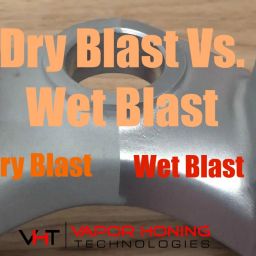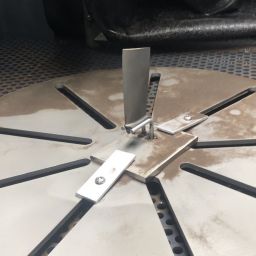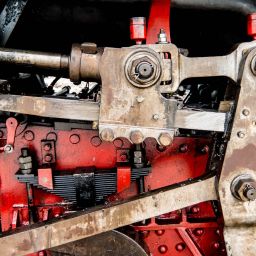The Complete Guide to Selecting and Operating a Vapor Blasting Machine
Are you interested in a better way of cleaning and resurfacing materials ranging from aluminum parts to cnc machined parts, and even restoration work ? If so, you may be considering the purchase of a vapor blasting machine.
Vapor blasting has many names known as liquid honing; vapor honing, wet blasting, aqua blasting, dustless blasting, and slurry blasting. No matter what name it goes by, this cutting edge technology is changing the way countless industries treat surfaces.
Why? Vapor honing comes with countless benefits. Not only does it provide a gentler process, but it also occurs at cool temperatures and isn’t prone to sparks and fire hazards.
What do you need to know about purchasing a unit? Keep reading for our guide to buying a wet blasting machine.
Vapor Blasting 101
Before we dive headlong into the nitty-gritty of purchasing a vapor blasting unit, there are a few questions we need to answer. They include:
- Why do you need a wet blaster?
- What’s the difference between wet and dry blasting?
- How does the vapor blasting process work?
- Which vapor blasting media may be used?
Attempting to find the right unit for your needs won’t make much sense until we explore these fundamental questions.
Only after you understand the aqua blasting process and how it differs from sandblasting can you decide on the right equipment. With that in mind, let’s take a closer look at each of these questions.
Why Do You Need a Wet Blaster?
Before you make an aqua blasting purchase, you need a clear understanding of all of the advantages of this technology. That way, you can make the best investment possible.
A wet blaster produces a finer finished surface than you’ll get with a traditional sandblaster. With an aqua blaster, the water flushes out the abrasive materials used in the process.
That way, you’ll never have to worry about damage to the surface, such as impregnation or pitting. You will enjoy a cleaner surface of any residual abrasive washed away.
Because of its gentler properties and superior results, you can rest assured that no damage will occur when vapor blasting a surface that you wish to preserve.
For this reason, a slurry blaster will de grease, clean, and blast a surface in one step. Talk about an efficient process!
As you can imagine, you’ll save significant time and effort when opting for wet blasting over sandblasting. What’s more, aqua blasting permits the use of much finer abrasive media than you’d use with a sandblaster. All abrasive sizes can be use including abrasives as large as 19 mesh up to 1200 mesh.
Why can you use these abrasive media with a wet blaster? Because the water in the process is a more effective conduit than that of compressed air alone. Finer abrasives will pack and not feed well in a dry blast machine. The abrasive will be mix with water in our vapor blast machine.
What’s the Difference Between Wet and Dry Blasting?
Every industry should rely on wet blasting for their cleaning and resurfacing needs. But do you really need one if you’ve got access to a traditional sandblaster? Let’s take a closer look.
We’ve already talked about how much gentler aqua blasting is than dry sandblasting. It’s because the water molecules act as shields or cushions, enveloping the abrasive particles.
The result? A cleaning action that’s less likely to harm even the most delicate surfaces. As for dry sandblasting, it results in an aggressive abrasive impact on the surface. This impact shatters the particles, causing hard-to-contain billows of dust.
Dust from a sandblaster cannot be inhaled by the operator or those nearby, as it can lead to silicosis, a life-threatening and irreversible condition. Besides the dangerous nature of sandblasting, it also proves a hassle to clean up.
As for wet blasting? It represents a nearly dustless process.
Why? Because the dust produced in the process remains enveloped in water droplets. As a result, it falls to the ground as a harmless molecule that’s quickly cleaned up by collecting the spent media in a receptacle, like a drain basin.
What else do you need to know about the differences between wet and dry blasting? Dry blasting hits a surface at an angle, which results in a deep anchor profile. But wet blasting is dispensed more easily over a surface because of its watery cushion. Usually the same anchor profile can be created within a wet system but the appropriate abrasive must be used.
This spray pattern results in a softer overall blasting process that proves more consistent. It creates a feathered pattern that’s easy to finish to a highly smooth surface. Last but not least, vapor blasters are much quieter, which operators will love. Most wet blast machines operate around 75 decibels sometimes even less.
How Does the Vapor Blasting Process Work?
When dry sandblasting, the process is driven by an air compressor. But with a wet blast cabinet the slurry pumping system is doing the mixing of the slurry and transporting it to the blast gun making the machines far more efficient than dry cabinets.
Some machines are built with different pumping systems. Other different pump impeller types depending on the application and use per week.
It’s also worth noting that all wet blast cabinets collect the water and abrasive back into the hopper or bottom of the machine for reuse.
Next, it gets pressurized in a nozzle or blasting gun, using air to accelerate the slurry coming from the pump. Either way, the slurry gets propelled into the airflow of the blast hose.
For most projects, you’ll use a slurry blast cabinet instead of outdoor aqua blasting equipment. You then add water and abrasive media to the cabinet, where it gets mixed and pressurized in a container.
From there, this “slurry media” gets blasted onto an object inside the cabinet’s enclosure. This approach represents an effective and affordable way to strip and clean items such as aluminum wheels or engine parts.
Which Vapor Blasting Media May Be Used?
Which types of media get used in a wet blasting unit? Users most commonly rely on glass beads or fine glass beads alone when working with a cabinet.
What about outdoor aqua blasting? Most users rely on copper slag, Green Diamond nickel slag, or crushed glass.
Selecting the Right Vapor Blasting Machine
We’ve fully explored why you need a wet blasting machine, how they work, and which types of abrasive media may be used with them. But what should you bear in mind when considering a vapor blasting equipment purchase?
You’ll need to decide whether you want to go with a closed-loop versus an open-loop system. To make this selection, you’ll need to ask the following questions:
- Will you run any additive in the machine (e.g., anti-microbial, corrosion inhibitor, etc.)?
- Do you have a drain where the machine will sit?
- Do you have water near where the machine will rest and be used?
The answers to these questions will help you know which vapor honing cabinet is right for you.
Closed Loop Versus Open Loop Wet Blast System
What’s the main advantage of working with a closed-loop wet blaster? You don’t need a supply of running water to operate it. As for an open-loop wet blaster, you’ll need to hook it up to an external water source such as a hose and you will need a drain to drain off excess rinse water that’s added to the machine.
A closed-loop wet blaster cabinet needs no external water connection or drain to operate. You add the water and abrasive to the cabinet, and you add more water to the external tank. As a result of a closed loop, the media will get recycle until you sway it out.
That said, a traditional open-loop system works fine if you have a readily available running water connection and have no concerns about water disposal.
But if you’re in a situation where water conservation or pollution restrictions represent a significant concern? Then, go with a closed-loop wet blaster system.
You should also consider whether you need tight process control. The answers to these questions will help you make an informed decision about the right equipment for your company’s needs.
After all, if you’re cleaning resurfacing components for the aerospace industry, you’ll need to adhere to different production regulations than if you’re prepping vintage auto parts for painting.
Keeping an eye on the media density check will allow managers in your blasting department to have the necessary control when it comes to processes.
Other Considerations Before Purchasing a Vapor Blasting Machine
Besides purchasing the vapor blasting machine, you’ll also need to invest in equipment related to the vapor honing process. What are some of the items that you’ll need to invest in? They include:
- Air compressor capable of 20 + CFM
- What are your building power requirements a transformer may be needed for more industrial machines.
- Abrasive Blast Media for your job
- Any machine consumables you might need
These necessary items will ensure that employees adhere to all safety requirements throughout the process and that you keep your machine running and healthy.
Water Quality and Vapor Honing Machine
As you consider the right machine for your needs, you’ll also need to pay attention to your facility’s water quality. After all, the pH of the water you use can significantly impact the process.
Most water, whether from a spring or well, comes out at a pH of about 7. But what if your water drops below 7? This score means the pH of the water is acidic and has more hydrogen ions than neutral water.
What if your water tests above 7? Then, it’s considered basic, which means it has fewer hydrogen ions than neutral water.
Why does this matter? Because if you plan on wet blasting materials such as steel, stainless steel, chrome, or aluminum, pH matters. It may result in discoloration that appears brown or purple.
The discoloration is caused by a specific abrasive media and water having a chemical reaction resulting in a pH change. The manufacturing process for certain abrasive media may be part of the problem.
That said, it’s worth having your water tested ahead of time to make sure it’s not the culprit. Find out more about how to test the pH of your water.
If you find your water is too acidic, add some sodium bicarbonate to raise it back to a neutral. Or consider using a water treatment product from a pool supply store to adjust the water’s alkalinity or acidity back to a 7.
Vapor Blasting Machine Cost
How much does it cost to purchase a wet blasting machine? And what can you expect to pay for operating it on an annual basis?
The final price you pay for equipment depends on the cabinet’s size or the type of outdoor blaster you purchase. That said, you should budget anywhere from $1,000 to $6,500 for a closed-loop system. Industrial Blasting systems start at $10,000 – $50,000 and automated machines are even higher in price.
Check out some of the most reasonably priced vapor honing machines on the market today and get in contact with our sales team to help you decide.
How much should you expect to pay for media abrasives? You can find our abrasive medias priced range from $25 to 55$ range. You can find additional products such as an anti-microbial agent for $20. Shop abrasive media ideal for vapor honing equipment now.
How much does it cost to run a vapor blasting cabinet per year? The answer to this question depends on how often your company will use it. Nevertheless, we can still take a look at maintenance and other costs.
If your employees wet blast items regularly over the course of a year. You can expect to pay between $50 and $160 for blast hoses, which need to be replaced every one to two years.
Blast nozzles will run you $20 a nozzle, and blast cabinet windows and components will cost between $45 and $65. We’ve already discussed abrasive media prices, and you should throw in between $40 to $50 for gloves.
Beyond that, you’ll want to check with your utility company to get an estimate of what electric and water prices may look like. This will vary depending on where you live and do business.
Vapor Blasting Applications
There are countless uses for a vapor blasting machine, whether you’re manufacturing cnc machined parts or restoring cars or motorcycles. For this reason, it’s a purchase that you’ll never regret.
The process ensures that surfaces remain undamaged while still getting efficiently honed to pristine condition. And, you won’t have to worry about workplace issues related to dust clouds, high decibel levels, or fire hazards.
Yet aqua blasting machines and cabinets remain affordable, making them a no-brainer investment. Still don’t believe us?
Check out this article on why you should buy a vapor honing machine.








